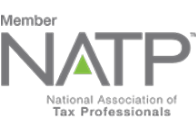As per IRS (Internal Revenue Service), depreciation is a tax deduction that recovers the cost of your fixed assets over time as you use it for your business. It is also a way to gradually enjoy its relative tax benefit since depreciation also decreases your overall tax liability on your annual return. In this blog, we will discuss some of the commonly used depreciation methods for financial reporting and explore the IRS’s method for determining tax depreciation, the MACRS.
What is Depreciation?
Depreciation is an accounting process to periodically decrease the value of a tangible asset over its useful life in recognition of its decline in value from wear and tear, obsolescence, or deterioration.
Depreciation Methods
There are various depreciation methods available that offer different approaches in allocating the cost of assets over time. Depending on the asset type and usage, each option can provide an accurate presentation of the asset’s actual value in your balance sheet. The following are two of the commonly used depreciation methods of accounting and they both consider salvage value (estimated recoverable value of the asset upon sale at the end of its life) in figuring depreciation.
Straight Line. This method evenly spreads out the cost of an asset over its expected useful life (estimated number of years that an asset is operational or useful). This is often used for assets that depreciate uniformly over time such as buildings, furniture and fixtures, or small office equipment.
Declining Balance. This is an accelerated technique that assigns higher depreciation in the earlier years of an asset life and then gradually reduces it as the asset ages. It best fits assets that experience significant decline in value in their early years especially those that are technology-dependent such as computers, gadgets, and machinery.
Understanding MACRS
MACRS, which stands for the Modified Accelerated Cost Recovery System, provides rules and guidelines in determining the depreciation deduction for tax purposes in the United States.
The IRS requires most taxpayers to use MACRS in depreciating their tangible assets as it provides the greatest and most accelerated tax deduction in the early years of an asset’s life. However, this method is not appropriate when preparing the balance sheet as it does not consider an asset’s salvage value in figuring the tax depreciation.
There are two sub-systems under MACRS, the GDS (General Depreciation System) and ADS (Alternative Depreciation System). Their difference lies in the allowed depreciation methods and recovery periods. Recovery period is the number of years over which a property is depreciated for tax purposes.
GDS offers a higher tax deduction in the first years of an asset’s life as compared to ADS since the former provides for a shorter recovery period and offers accelerated methods of depreciation while the latter generally has longer recovery period and only uses the straight-line method in computing for depreciation.
As a rule, a taxpayer must use GDS over ADS in determining their depreciation deduction unless you are required by law, or you elect to use ADS.
Property Classifications under GDS
There are nine (9) property classifications under GDS and below are some of the examples of properties under each class:
| Classification and Recovery Life | Properties |
| 3-Year Property | Tractors; racehorses; qualified rent-to-own properties |
| 5-Year Property | Vehicles; office machinery; computers; appliances and furniture used in a residential rental real estate activity; breeding and dairy cattle |
| 7-Year Property | Office furniture and fixtures such as desks, files, and safes; railroad track |
| 10-Year Property | Vessels, barges, tugs; tree or vine bearing fruits or nuts; qualified small electric meter grid system |
| 15-Year Property | Land improvements such as shrubbery, fences, roads, sidewalks, and bridges; any retail motor fuels outlet |
| 20-Year Property | Farm buildings; some municipal sewers |
| 25-Year Property | Property that is an integral part of water distribution system |
| 27.5-Year Property | Structure with at least 80% of gross rental income is from dwelling units. |
| 39-Year Property | Office building, store, or warehouse. |
Recovery Periods under ADS
ADS assigns a longer recovery period for some of the properties. For example, rent-to-own properties and tree or vine bearing fruits or nuts have longer recovery periods under ADS with four (4) and twenty (20) recovery years, respectively.
For the full list of recovery periods for both GDS and ADS, refer to the IRS’s 2022 Publication 946 (irs.gov).
Figuring out the Tax Depreciation
Familiarity with the depreciation methods of accounting is not equivalent to understanding the MACRS way of determining your tax deductions. They are applied differently under this tax system. Unless you have software for tax depreciation, we strongly recommend that you hire a professional to ensure compliance with the MACRS’ complex rules and take full advantage of its tax benefits.
Want to learn more?
You may want to consult and work with 1099 Accountant – We offer online bookkeeping, online advisory services and online tax and accounting services. We offer reasonable rates. We only work with independent contractors, freelancers, and one-person business. We work with locum tenens from California to New York City and everywhere in between. Yes, even Hawaii!
Contact us toll-free (855)529-1099 or make an appointment for a free consultation. Contact Us











